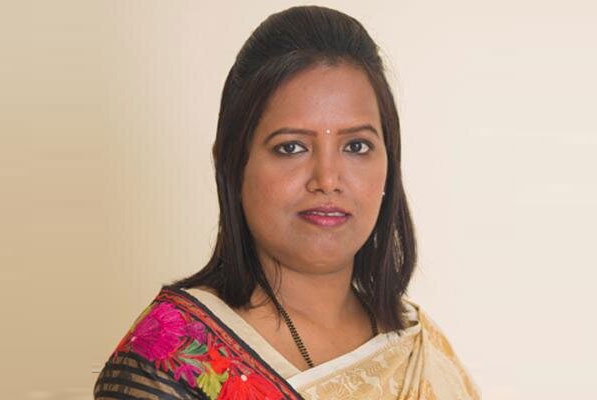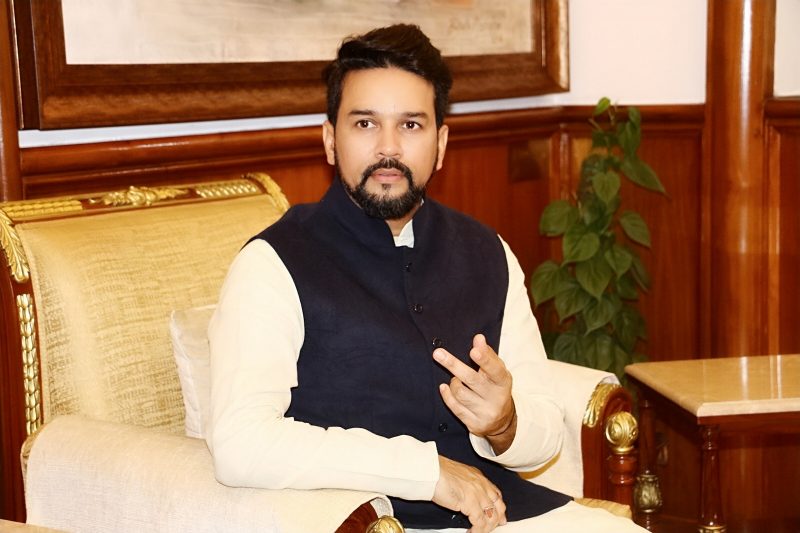Maharashtras Education Minister Varsha Gaikwad is a 4-term MLA from Dharavi and a second time Cabinet minister in the Uddhav Thackeray-led Maha Vikas Aghadi government. Her constituency Dharavi has emerged as a cluster of Covid-19 with the total number of cases crossing 1,400. She says the government is trying to reduce crowding in the area and enforce social distancing. Besides, the government is also facilitating migrants return to their native places.
A well-groomed politician — her father Eknath Gaikwad is the President of Mumbai Congress — Varsha Gaikwad has her task cut out in Dharavi, which is Asia’s largest slum, and where over 7 lakh people are cramped up in an area of 2.25 sq km.

She speaks exclusively to IANS and spells out her priorities. Excerpts from the interview:
Q: What is the situation in Dharavi?
A: There are around 1,400 corona positive cases in Dharavi. The cases are rising elsewhere in Mumbai too, as we go for more testing as per Central government’s guidelines. We are testing continuously to detect cases.
Q: How many tests are done in Dharavi?
A: We have opened transit camps and are testing people who have symptoms. We are trying to detect as many cases as possible. We have opened centres at Sion hospital and in BMC (Brihanmumbai Municipal Corporation) hospitals.
Q: How are you dealing with migrant workers in Dharavi?
A: Those who want to go home, whether from Uttar Pradesh Chhattisgarh Rajasthan or Tamil Nadu, we are arranging their return to their native places as per the directives of the state governments. We are making a list of such people through NGOs and our party workers. When the numbers are adequate, we book a train and send them to their states daily. In Dharavi, the government’s prime job is to try and reduce crowding in the area because many people live together in small houses. It is very tough to identify people and test them and trace the contacts because each house has 7 to 8 people living in.
Q: How are you getting the help of NGOs and others?
A: We have provided 25 ambulances to the Jain Samaj; each ambulance works like a dispensary and is manned by private doctors who test and help in tracing the people who have symptoms. We are monitoring continuously; the screening is not feasible in a day. Private doctors are playing a vital role by helping us to detect cases and identify clusters as they know the families and have that confidence level.
Q: How are you identifying the vulnerable sections?
A: We are prioritising the elderly for tests and also those who have a history of hypertension, diabetes or other ailments. In case some of them test positive or show symptoms, they are treated or are kept in quarantine centres. There are Covid-19-dedicated hospitals; we have taken over schools, hotels community centres in the area as per the Disaster Management Act and converted them into quarantine centres.
Q: Is there any evidence of community spread?
A: You have to understand the demography of Dharavi where 80% of the people live in less than 100 sq ft area and there are more than five to seven people in each house and at least 50 people use a single toilet seat. So it is very problematic for them to maintain social distancing in their houses. For social distancing, we have taken steps to create awareness among people and have distributed sanitizers. Buildings and common places have been fumigated.
Q: You are saying you are trying to reduce crowding in Dharavi to maintain social distancing?
A: We are trying to maintain social distance to reduce crowding. In collaboration with medical practitioners at community level, we have tried to instill confidence among the people, and we are monitoring them continuously.
Q: Are those are going out of Mumbai being tested?
A: We are adhering to the Central government policy and the guidelines put out by other states. Those who are leaving by private vehicles and buses are being tested, but those who are going by train they are being screened at railway stations. Those who show symptoms such as a fever are separated and kept in quarantine centres, though they don’t require a medical certificate (while leaving).
We are giving rations and also cooked food through NGOs through our network and the food is reaching them because they are not expected to come out to fetch food. While doing so, we keep in mind social distancing. In this situation, we understand that many of them are disturbed because they jobless and don’t have money.
Q: You are sending them home, but don’t you think there will be a labour shortage when the situation normalises?
A: This is a humanitarian crisis — people want to go home, live with their families and they don’t know how long it will last. Yes, there could be a labour shortage, but we expect that as the situation normalizes, people will return. Right now our priority is their health.
Q: As the Education Minister, how long do you think the school will remain closed?
A: We have been consulting the Chief Minister and the officials concerned, and we are going as per the Central government’s guidelines. There is no decision yet on opening of schools, but we are chalking out a strategy so that students and children are safe. Let’s see how the situation evolves.








